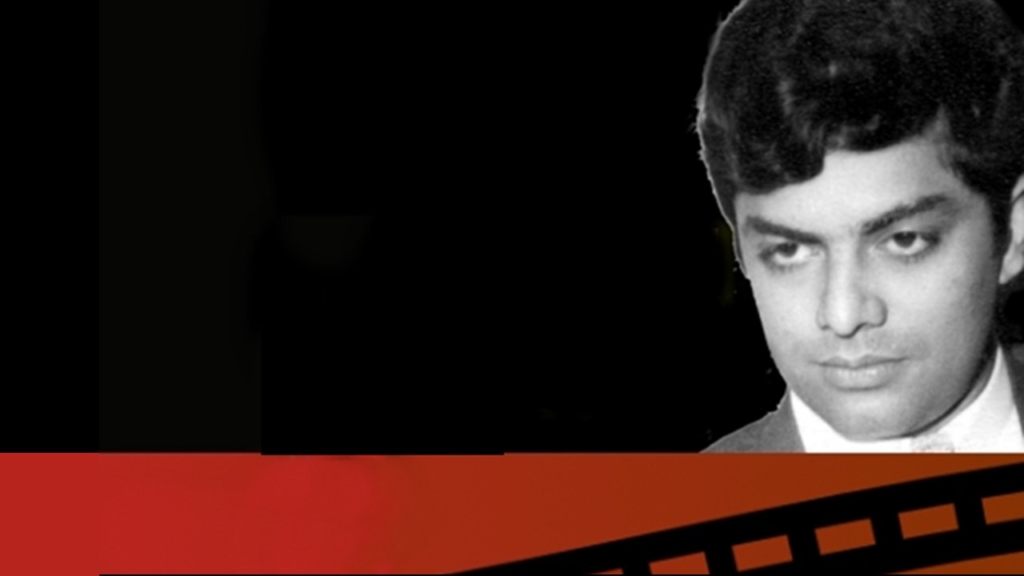Dawn Images, Sunday, 23 November 2008
 I have been researching the life and works of Waheed Murad for more than 20 years now and the mystery around him deepens with every new clue that I come across.
I have been researching the life and works of Waheed Murad for more than 20 years now and the mystery around him deepens with every new clue that I come across.
He is the greatest screen legend of Pakistani cinema and therefore we forget that he was also a writer, director and producer who entered filmdom with the intention of making some serious statements about the nation (he didn’t even appear on screen in his first two productions). As soon as we shift our attention from the Chocolate-Cream Hero to the film-maker, we are in for a volley of surprises. Here I discuss just one of the many.
As an actor, Waheed featured in more than 120 films but he also produced 11 titles under his banner, Film Arts. The first two in which he didn’t appear may rightly be regarded as pilot projects since he hadn’t even formed his team by that time, and it can be presumed that the statement he was trying to make didn’t come across effectively. That leaves nine films which can be rightly considered as his “statements”. Quite surprisingly, they seem to depict the gradual unfolding of a single profound message — sometimes too bold to be given directly and hence necessitating the use of masks and parables.
The first is Heera Aur Pather (1964), which was the story of two brothers hailing from a working-class family on the outskirts of Karachi. One of them gets educated in the city but in order to marry in a wealthy family he disowns his ageing father, young brother and a sister of marriageable age. In the next film, Armaan (1966), which was also written by Waheed, one saw just the opposite as here an educated young man (played by him) seeks his soul mate in a poor orphaned girl (Zeba). Ehsaan (1967) presented the story of an orphaned boy raised by a benevolent family falling in love with a young widow already the mother of a school-going daughter.
I see a definite pattern emerge here. If the torn-apart family in Heera Aur Patthar is taken as an analogy of Pakistani society then the message is clear — the educated middle class has severed its organic connection with the unschooled masses who are compelled to drive the wheels of the country all by themselves (the disowned brother is a donkey-cart driver played by Waheed).
If this was indeed the message that Waheed intended to impart through the film, then the very next one suggests the solution: Educated youth from well-off families should try to find out what their real ideal ought to be. Ehsaan (1967) seems to present the basic principle on which societies like Pakistan can be built. The principle is ‘ehsaan’ which, roughly translated, means ‘benevolence’ but has a deeper meaning in the Sufi terminology and these meanings are successfully explored by the gifted poet Masroor Anwar in the film’s songs and dialogue.
If Waheed was a film-maker who presented the anatomy of Pakistani society through his films then he couldn’t have remained indifferent to the rift between West Pakistan and East Pakistan (now Bangladesh), which had begun to appear by that time. It became the theme of his next film which was symbolically named Samandar (1968), since the sea and not the land connected the two wings of the then Pakistan. For the female lead role he invited the Bengali actress Shabnam from East Pakistan who had never worked in West Pakistan before.
The music was also composed by Deebu Bhattacharya (instead of Waheed’s usual composer Sohail Rana). The lyrics were penned by none other than Sehba Akhtar who later became famous as the Poet of Pakistan for patriotic numbers such as ‘Main Bhi Pakistan Hoon, Tu Bhi Pakistan Hai’. In the lyrics for Samandar, he infused the same patriotism in layers of allegory, such as the famous title song ‘Saathi, Tera Mera Saathi Hai Lehrata Samandar’ (O’ friend, the sea is our mutual friend).
Interestingly, the story of Samandar (also written by Waheed himself) shifted the focus from love interest to the strained friendship between two friends. Set in a fishing colony which can be treated as an analogy of Pakistan, one friend aspires for nothing except love while the other who aspires to become the next leader of the fishing colony ends up playing in the hands of outsiders. The first friend (Waheed) is persuaded by the people to defeat the other in the race for leadership, but having done that he transfers the power to his defeated friend after eliciting from him a promise that he would serve the community without playing into hands of the outsiders.
In those days Samandar was not taken as anything but an ordinary film, but now it seems almost certain that it was an analogy of the East Pakistan crisis: Waheed was suggesting that the only moral ground for asking East Pakistan to give up the Six Points for the sake of the federation was that the politicians of West Pakistan should agree in return to let the next prime minister be from the East. It may be asked why Waheed didn’t elaborate his message so that people could understand what he was trying to say. This is a question which should answer itself. Those were the days when Sheikh Mujibur Rehman was being tried for treason by a military government and what Waheed was saying about the issue could have landed him in jail and earned a permanent ban on his film.
Quite understandably, the next was Ishara (1969), literally meaning ‘hint’ or ‘suggestion’. It is the only film ever directed by Waheed (he also wrote it) and turned out to be an allegory about the film-maker’s creative self. The film opens with the subjective camera moving into an alley, and Waheed’s voiceover telling us that this is the street where he lives. Thus the camera becomes the eye of the viewer visiting the inner world of Waheed’s creative self (he plays a painter whose paintings are “admired by many but purchased by none”).
Quite interestingly, we see him entertaining three little children in his studio. He asks their opinions about his newly finished painting, and the opinions turn out to be very immature. Here is Waheed and his audience then. He has got no option but to wait for the day when they “grow up” but even while they are immature, his affection for them is unfailing.
Naseeb Apna Apna (1969) takes this analogy into a darker zone by portraying a sister who works as a dancing girl in the red light area in order to “educate” her brother who lives in a hostel and is unaware of the dark side of his family. Needless to say the dancing girl can be taken as an analogy of the entertainment industry which is unfairly treated as a mere plaything (a point which Waheed’s team of Pervez Malik, Sohail Rana and Masroor Anwar were also trying to drive home in another film called Doraha around the same time).
The East Pakistan crisis is revisited in Mastana Mahi (Punjabi), which was released in early 1971. Sheikh Mujib had won the elections but the politicians of West Pakistan as well as the army were reluctant in transferring power to him. Failure of negotiation was followed by a disastrous army action which resulted in the break up of the country.
The opening sequence of Mastana Mahi was about a village thug who prevents a married woman from going to her husband belonging to another village. In retrospect, allusions to the political situation are extremely obvious throughout this sequence (such as the skin of a Bengal Tiger displayed on the wall of the village thug although the tiger is not found in Punjab), and the rest of the film places the question of national integration in its larger perspective — and it is a perspective which is relevant even today.
Waheed’s last two films, Jaal (1972) and Hero (1985), although separated by 13 years (the last film was released more than a year after his death), have the common theme of the agonies of a soul which knows too much. Jaal’s poor taxi driver educates his sister and gets her married into a well-to-do family. While raising money for that purpose he falls into the trap of a crime racket which, he learns only at a later stage, is being run by none other than the father-in-law of his newlywed sister. For her sake he is willing to risk all but she risks her own life in order to force him to speak the truth. Hence we see a complete reversal of the Heera Aur Pather situation as things come full circle and for the better.
Waheed had claimed before the press that “A new Waheed Murad will appear before you in Hero.” It is the story of a thief who is so perfect in his craft that he leaves no trace behind (just as Waheed doesn’t leave any clue of the underlying subversive messages in his films, and yet they could not be more perfect in allegorical structure). This becomes his Achilles’ heel because he gets caught every time the police don’t find any evidence on the scene of the crime. His boss provides him cover by setting up a fake film company and introduces an illiterate look alike of the thief as a hero. The police mistake him for the thief and maintains surveillance on his activities while the real thief goes about his business — he now has an alibi.
Needless to say, the story was written by Waheed. This leaves us with a nagging question about who the real Waheed Murad was — the one we watched on screen as the Chocolate-Cream Hero or the genius who stayed behind in the dark and played around with our emotions? In one of his last interviews he had said, “Sometimes I think that if I suddenly disappear or am no more for any reason, I would like to be remembered by the song ‘Bhooli hui hoon dastaan, guzra hua khayal hoon/ Jiss ko na tum samajh sakay mien aisa aik sawal hoon’.” (I’m a tale forgotten, a thought bygone. I’m the question which you couldn’t understand).

I am surprised to find out that such an underrated writer who penned down stories like ” Samandar”,which was based on the tragedy of the separation of East Pakistan was never thought of as a writer too. We find out how sensitive he was towards humanity by reading about him though the efforts of Sir Khurram Shafiq